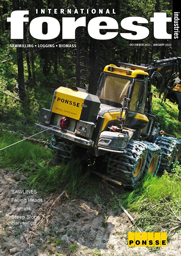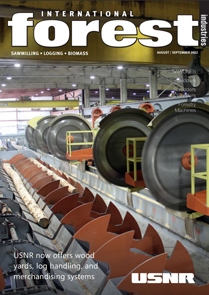EDITOR’S COMMENT Issue 88
End of the beginning
The last time I used these column inches, I painfully opined the current squeeze on contractors, as the price of timber shrank away and the cost of, well, everything – including equipment and inputs such as fuel – rose at a pace not seen in a generation.
The search for better news for this column has come up well short. My natural disposition is to look for the positives in situations and so the search for a positive spin was extensive. In that context, the dearth of useable developments that could be seen in a summer glow, is even more disappointing.
But facts are facts.
If we take the US as our proxy, inflation has been charging north since late last year, surging from 5.4% at the end of the September quarter to 9.1% in the most recently published figures available at the time of writing (June) – that’s up from 8.6% in May, representing the highest levels since November 1981.
The timber price, meanwhile, continues to contradict this macro trend and slide south. The World Bank’s Timber Price Index was at 88.3 in March; had dropped to 83.5 when we last published; and had dipped below 80 at time of writing.
Though the jury is still out on whether we are heading for a global recession, I find it hard to see another outcome. Federal bankers are walking a tightrope in balancing interest rate rises that are their only weapon in the war on inflation, with the need to maintain at least a creeping level of growth – growth that will be undermined by the same rate rises.
It will take a coordinated effort from policy makers around the globe, with a mistake from just one major economy having the potential to trigger recession for itself and its trading partners.
Wood industries would, like most others, contract during a global recession. Inflation would necessarily flatten off for at least some daily industry consumables in such an environment, but it will remain the most difficult period since the global financial crisis in 2008-2009.
While it may be hard to find outright positives in this situation, there is perhaps a silver lining to be seen on an otherwise dark cloud. And it is born of the pain from that 2008-2009 recession.
Leading into that period, wood industries had enjoyed unbridled growth for several decades – arguably the ‘Gilded Age’ in the late 19th Century was the last time the world saw a period of such sustained prosperity.
The recessionary window some 13 years ago forced a dramatic change in structure for contractors and industry suppliers. We saw those in the timber stands look for greater efficiencies and versatility in operations to add multiple revenue streams, adding diversification and some protection against demand fluctuation in specific markets. It was much the same in the sawmills.
Suppliers (and some sawyers) merged – either through distress or strategically – to achieve scale and bring down costs, while shifting R&D efforts toward those new demand areas from contractors.
The relatively brief period of partly constrained growth since 2008-2009 leading into present day has hardly allowed wood industries to relax their discipline, and so the sector we have today is lean and mean – it is in great shape to endure a global recession.
Still, we predict any manufacturer offering clear cost saving and efficiency gains will be well received in markets over the next 18 months, as margins and survival take priority of revenues and growth.
Enjoy
Chris Can




